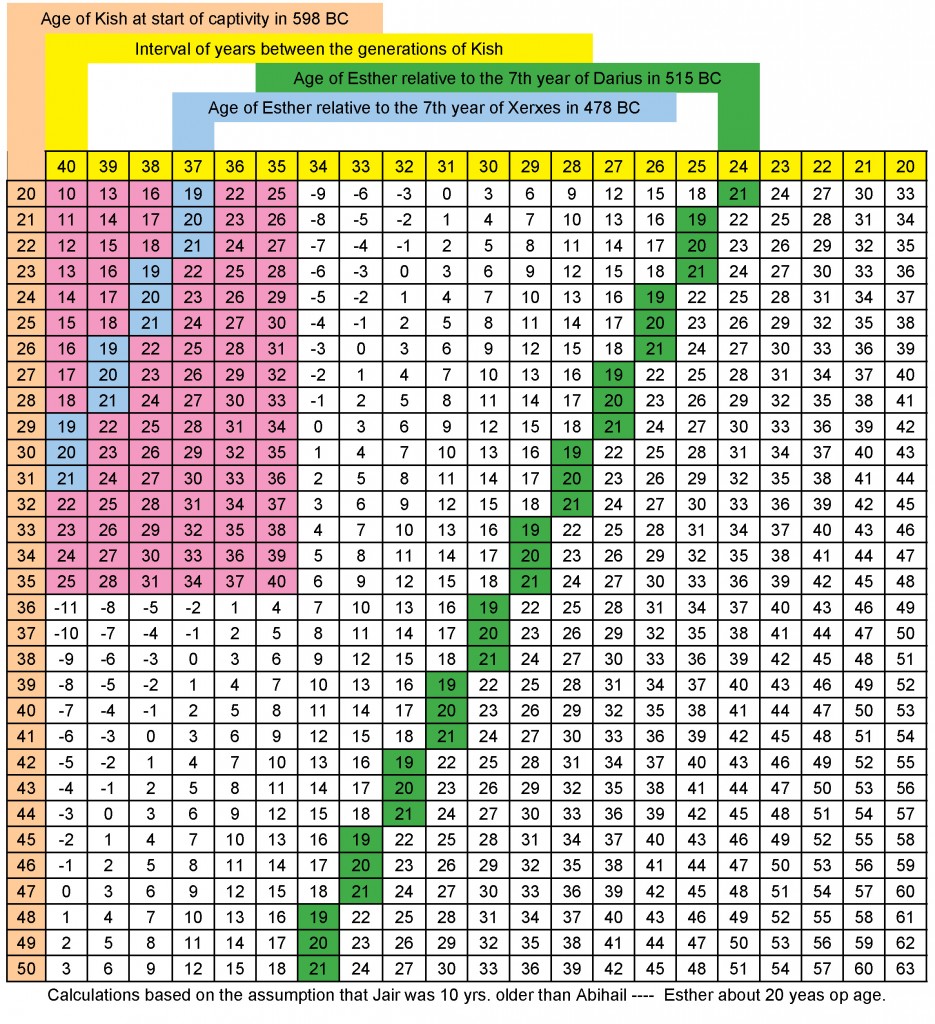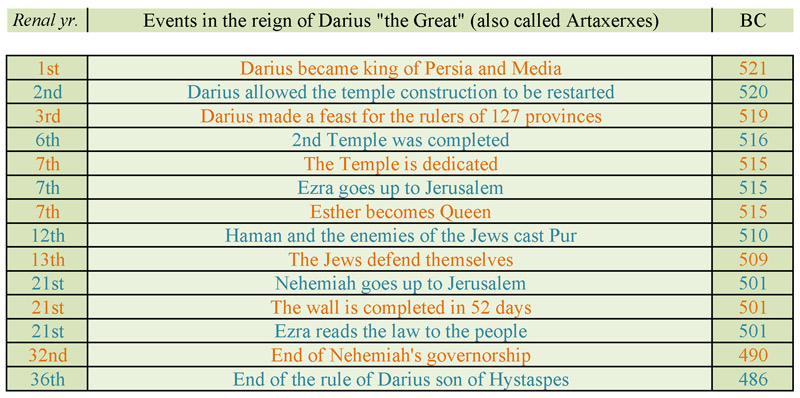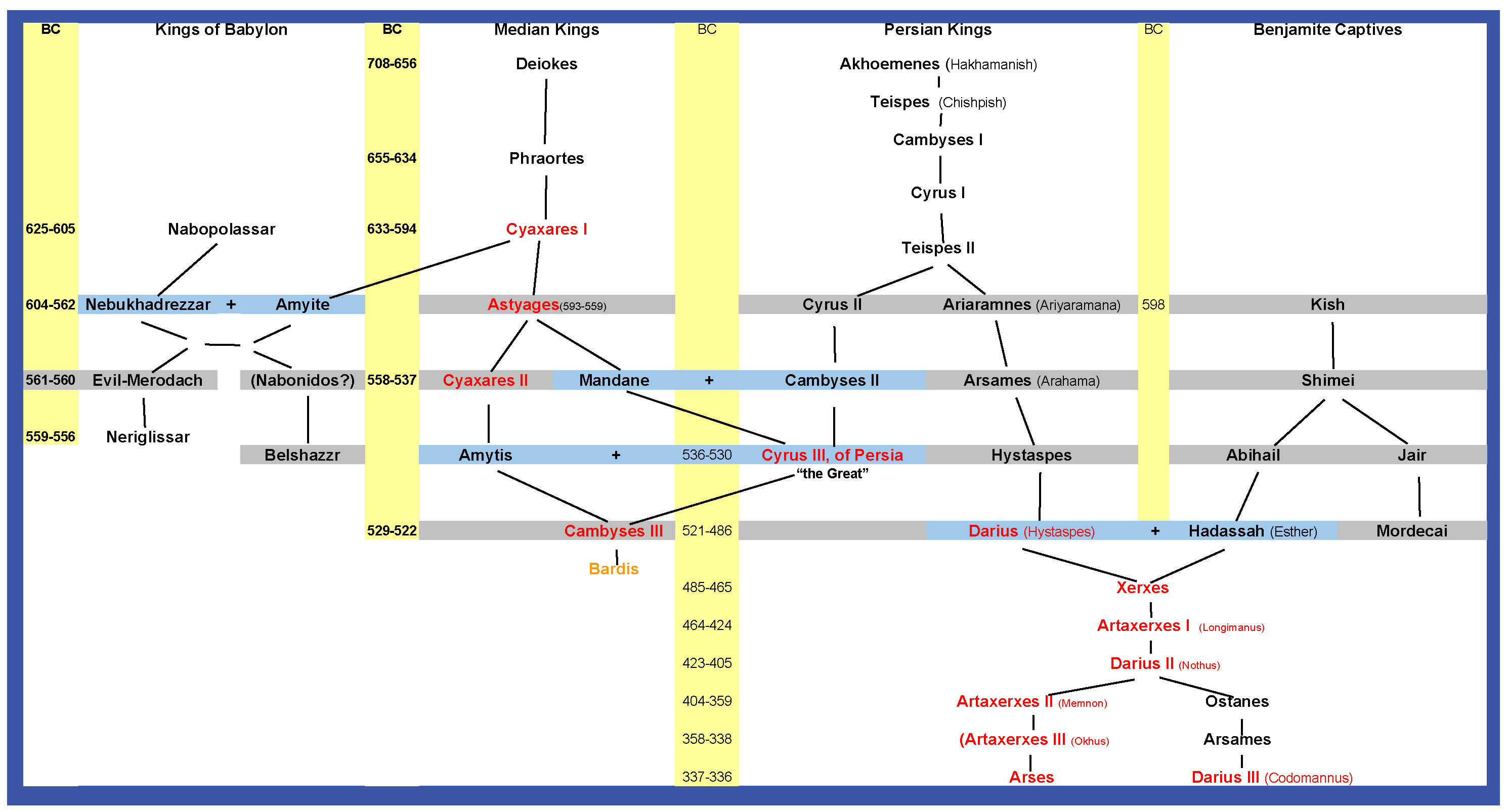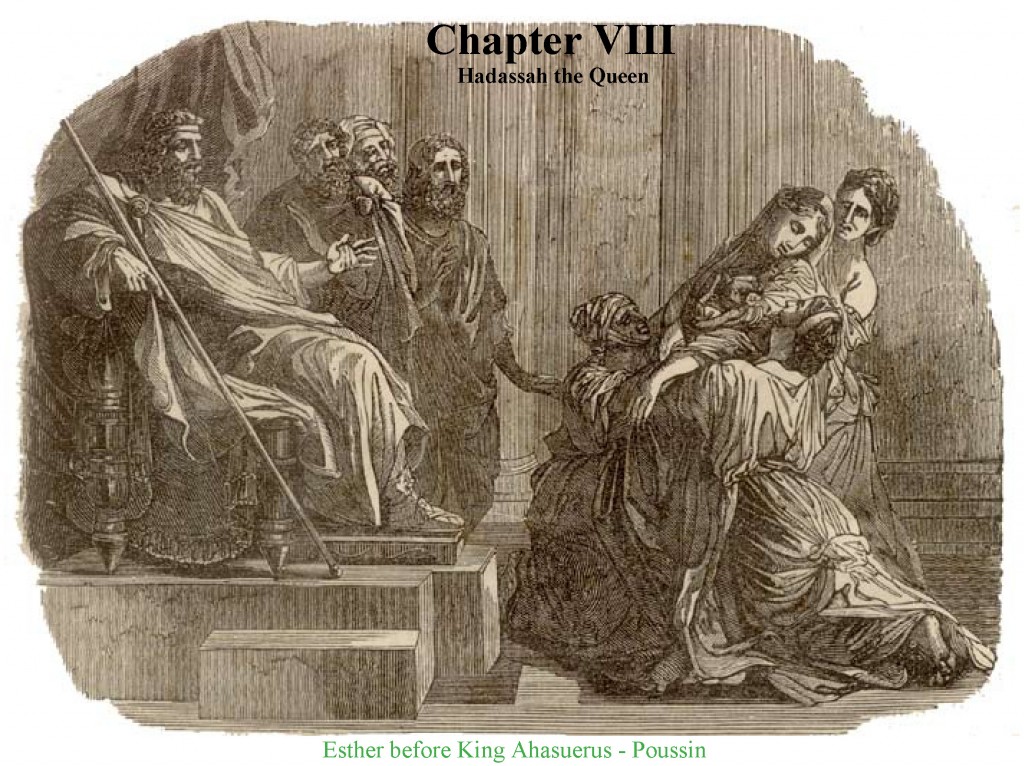 “The Queen Sitting Beside Him”
“The Queen Sitting Beside Him”
In part I of a Queen of Persia – King of 127 Provinces,
I quoted several sources which provide a reasonable basis upon which to state that Darius “the Great”, also known by the title Artaxerxes and Ahasuerus, ruled over 127 provinces from India to Ethiopia. Further based on this evidence, it is likely Darius was the Persian king who chose Esther as his queen.
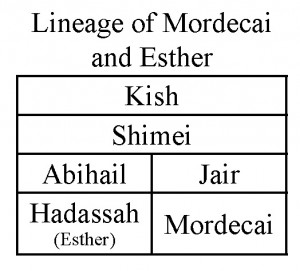 This premise also finds support from a different angle of research. In Esther 2:5-6, it gives the lineage of Mordecai. In this passage, it states that his great grandfather, Kish, was taken captive when Nebuchadnezzar took King Jeconiah of Judah. The most reasonable rendering of this information places Mordecai and Esther as contemporaries of Darius, son of Hystaspes (See Generational comparative here) The Bible states that Esther was a “Na’arah” or young woman under the charge of Mordecai, her cousin. Any later in the Persian chronology and Esther would have been far too old to be the young maiden described in the Biblical story.
This premise also finds support from a different angle of research. In Esther 2:5-6, it gives the lineage of Mordecai. In this passage, it states that his great grandfather, Kish, was taken captive when Nebuchadnezzar took King Jeconiah of Judah. The most reasonable rendering of this information places Mordecai and Esther as contemporaries of Darius, son of Hystaspes (See Generational comparative here) The Bible states that Esther was a “Na’arah” or young woman under the charge of Mordecai, her cousin. Any later in the Persian chronology and Esther would have been far too old to be the young maiden described in the Biblical story.
The table below shows the age of Kish at the start of his captivity in 598 BC and his generations relative to Esther as a young woman of 19-21 years of age.
This brings me to an often overlooked and unusual statement in the book of Nehemiah. In the following passage, Nehemiah, the cup-bearer to King “Artaxerxes” of Persia, hears troubling news from Judah concerning the city of Jerusalem. The king notices the downcast countenance of Nehemiah and asks what is troubling him. After Nehemiah explains his troubles and makes his request the king makes an interesting statement which Nehemiah records:
6 And the king said unto me, (the queen also sitting by him,) For how long shall thy journey be? and when wilt thou return? Nehemiah 2:6 KJV
Why did Nehemiah go to the trouble to note “the queen sitting beside him”? He made mention of the Queen of Persia because she was none other than the Jewish Queen Esther, one of his own people. Think about the implications of this information: During the reign of Darius the Great, a young Jewish woman was queen. Mordecai, her uncle, was the second most powerful man in Persia. Nehemiah was cup-bearer. Josephus even notes that Zerubbabel, who preceeded Nehemiah as governor of Jerusalem, was a bodyguard to the king. This explains in part the magnanimity of Darius towards the Judean captives’ efforts in rebuilding their temple and city. These very same people were some of his most trusted and loyal subjects.
This may also explain in part why Haman hated the Jewish people so much. They were clearly a threat to his influence and power. For more on Haman’s attempt to destroy the Jews see my articleApril Fools
The following table gives a list of events during the reign of Darius the Great {even} Artaxerxes.
For those of you familiar with the chronology of the Persian period you might object to the idea that Nehemiah was a contemporary of Darius Hystaspes the Great “Artaxerxes.” In subsequent articles I will explore the chronology of Ezra, Nehemiah, and Darius. You will see that the chronological confusion of the Persian period can be traced back to a single assumption related to a prophecy in the Book of Daniel; an assumption, I might add, with no reasonable basis in the chronology of the Old Testament.
More Articles related to the prophecy of 70 Weeks and 2nd temple era chronology:
The “Artaxerxes” Assumption – The best kept secret of Old Testament chronology.
The Fifth Command – Why do prophecy teachers ignore it?
Ezra: Priest & Scribe – Part I – Defining “Artaxerxes” in the context of Ezra.
Ezra: Priest & Scribe – Part II – Ezra, Darius even “Artaxerxes”.
Nehemiah: The Governor– Nehemiah’s place in the 2nd temple chronology
Queen of Persia – Part I – Defining Esther is the context of the 2nd Temple era.
Queen of Persia – Part II – Defining Esther is the context of the 2nd Temple era.
A New Testament Cipher – The key to unlocking the prophecy of Daniel’s 70 Weeks.
Ezekiel’s 13th Month– Key to understanding Biblical “time” in the 2nd Temple era
6 milestones – Seventy Weeks – Defining the purpose of the Messiah within Daniel’s 70 “weeks”.
The Messiah Factors (Part I): Decoding 13 & 14 – Symbolism of the Messiah
The Messiah Factors (Part II): The Countdown – Proving Yeshua/Jesus is the Messiah promised in Daniel 9.

